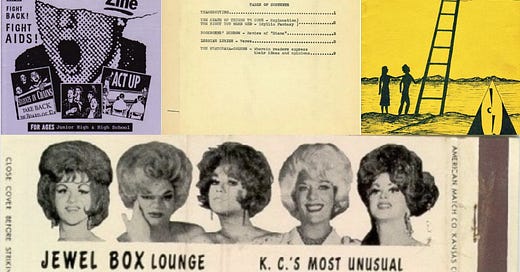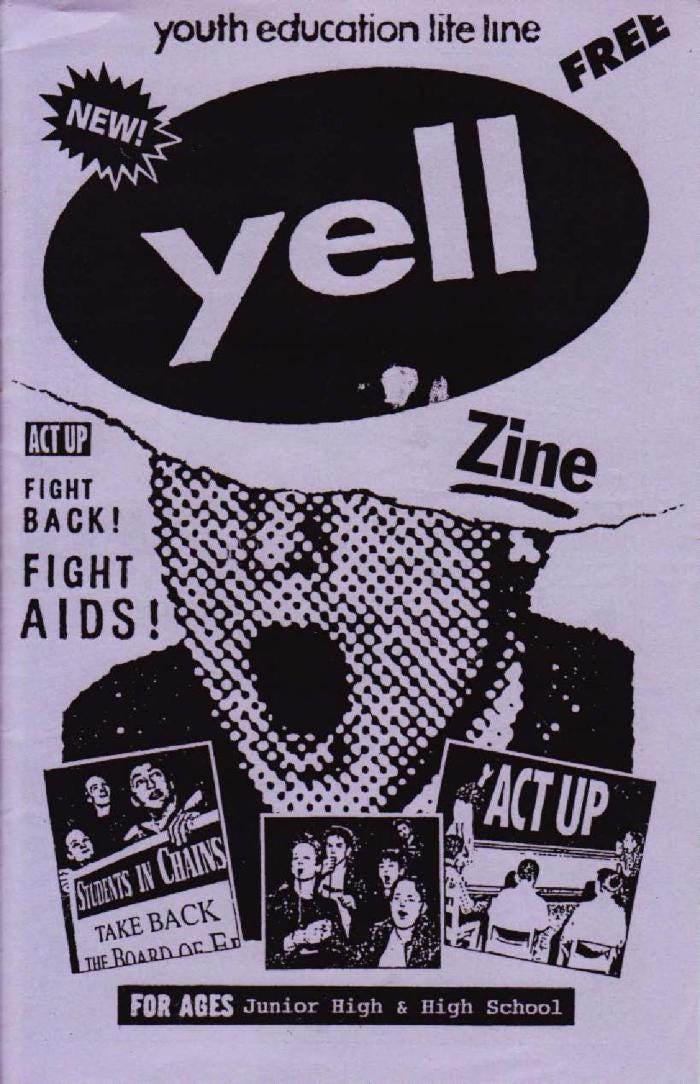Throughout history, LGBTQ+ people have had to be creative in connecting and finding each other, especially in the face of homosexual criminalization and anti-LGBTQ legislation that is prevalent even today. It's impactful to witness the power of queer community in the face of all types of oppression throughout history. Even in the early days of the internet, it revolutionized how LGBTQ+ individuals connected and found each other; today, I want to focus on the queer community before the days of the internet and the innovative ways LGBTQ+ people connected.
Slang terms were (and still are) a way that LGBTQ+ individuals could find one another without outing themselves to non-LGBTQ+ individuals. For example, dating back as far as WWII, gay men would ask someone if they were a 'friend of Dorthy.' If the person responded confused and asked 'Dorthy who?' The man would know not to say anything else, but if the person responding said something like they were 'a good friend of Dorthy, ' the man would realize he could proceed.
It wasn't just slang terms; gay men in the UK even came up with their own language to avoid imprisonment for being homosexual. The language called Polari sounds like gibberish, as the Oxford English Dictionary says it is "made up of Italianate phrases, rhyming slang and cant terms." However, this language, which sprung up as early as the 1700s and 1800s, was a way for gay men to connect, find one another, and stay safe while doing so.
Outside of language, the queer community found other ways to connect and inform one another of safe spaces to meet. In 1964, Bob Damron, who operated many gay bars, published an address book, which was a travel guide for gay individuals. He enclosed places he visited that were gay-friendly, including bars, bookstores, restaurants, and bathhouses. Over six decades, the Bob Damron Address Book was published and updated and was a resource for LGBTQ+ individuals (but primarily gay men) seeking community.
Custom matchbooks with gay bar logos printed on them functioned as another way to inform people of queer spaces, some dating as far back as the 1930s. As Andy Campbell writes in Queer x Design, "They (matchbooks) could end up traveling hundreds of miles from their initial location, spreading the gospel of the existence of queer space."
Perhaps one of the most well-known ways of flagging and finding one another is the hanky code, which is still used today. It was thought to come into existence during the gold rush era when there weren't many women in San Francisco. While dancing, hankies tied around the arm or in someone's pocket signified if someone was the lead or the follower in a dance. By the 1960s, primarily gay men utilized this system but added more colors, indicating sexual preferences and fetishes. The code has continued to grow, with colors and hanky placement meaning various things.
Before the internet age (and even after), magazines and zines were another way that the queer community blossomed. Numerous zines helped people connect and today have helped preserve LGBTQ+ history. Vice Versa was the first lesbian zine created in 1947 in Los Angeles. It was created by Edythe Eyde, who went by Lisa Ben in the publication as an anagram for lesbian. There were only nine issues created and a handful of copies printed, but even still, the zine was passed amongst lesbian circles. It was the grassroots that helped lead to more prominent lesbian magazines, including The Ladder, which started in 1956, and Dyke A Quarterly, which began in 1975.
Zines were also impactful in documenting the AIDS epidemic and providing education and information as the government and mainstream publications were sweeping the issue under the rug. One such zine was the YELL Zine, created by the Youth Education Life Line, which was part of ACT UP. As ACT UP wrote then, "Why does a 'zine like this HAVE to exist? Why do young people have to learn about a deadly disease from an underground publication as if we were living in a police state?! Because your school isn't telling you about it. Your parents aren't telling you about it. TV isn't telling you about it. NO ONE is telling you about it, even though it could kill you!"
Grassroots organizations were another way to forge community, connect with others, and fight for LGBTQ+ rights. Before Stonewall, this was referred to as the 'Homophile Movement,' defined by the Library of Congress as "the local, national and international social-political movement for gay and lesbian rights which emerged following World War II." There were an estimated 60 homophile organizations before Stonewall, and in 1970, there were 143 homosexual or gay groups.
One such organization was Knights of the Clock, a homophile interracial social club founded by Merton Bird, a black man, and his white partner, W. Dorr Legg. Founded sometime between 1949 and 1952 (sources differ), this group is one of the oldest United States gay organizations. While it was primarily a social club, it also addressed social issues related to interracial couples and assisted in finding integrated housing for same-sex couples.
Daughters of Bilitis, founded in 1955, was the first lesbian rights group in the United States. Rosalie "Rose" Bamberger, a Filipina woman, initially had the idea for the social club, which she created with her partner Rosemary Sliepen and three other lesbian couples. The social club grew into something much more as it became a national lesbian rights organization that endured surveillance by the police as well as the CIA and FBI. In 1956, they began publishing and distributing The Ladder, the first nationally distributed lesbian periodical.
The last organization I would like to highlight today is the Veterans Benevolent Association, founded in 1945 by four honorably discharged gay veterans. This is another group that was created primarily as a social club. Still, it also focused on issues related to blue discharge, which was given to homosexual service members and was categorized as less-than-honorable discharge but not dishonorable. These blue discharge members were not eligible to receive help from the G.I. Bill, which provided various benefits and support to some WWII veterans. The group also had a legal advisory panel that helped individuals facing discrimination in employment or housing for their sexual orientation.
Whether creating a new language, sharing matchbooks, publishing books and zines, or creating grassroots organizations, the queer community has shown its resilience in the face of adversity. Looking back on the rich history of queer culture and society, I am so proud to be a part of this beautiful community that has grown and thrived and found each other even when the odds were stacked against it.





